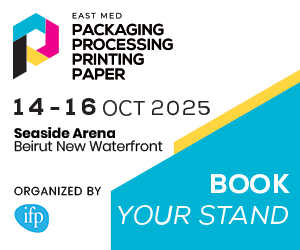Global demand for packaging labels is projected to reach $48.3 billion in 2025, with continued growth pushing the market to $57.5 billion by 2030, according to a new report by Smithers, a leading authority on the packaging industry.
This represents a compound annual growth rate (CAGR) of 3.6%, driven by brand investment in advanced print technologies, smart packaging features, and more sustainable materials for labels and films.
Data from Smithers’ latest study, The Future of Labels and Release Liners to 2030, forecasts that label and sleeve volumes will rise from 83.0 billion square meters in 2025 to 99.1 billion square meters in 2030.
Among label types, pressure-sensitive labels remain dominant, accounting for 61.9% of market value. Wet glue labels follow, holding a greater share by volume. While linerless labels are gaining attention, they will remain a niche segment, with release liner volume expected to grow from 35.2 billion square meters in 2025 to 42.3 billion in 2030.
Sleeves are emerging as a key alternative to traditional labels, particularly in the soft drinks sector. Shrink sleeves, with a projected 12.4% share by volume in 2025, and stretch sleeves (3.1%) are both forecast to grow above the market average, increasing the printable surface area per unit.
Food, soft drinks, and alcoholic beverages remain the leading end-use sectors, accounting for over two-thirds of label consumption by volume. These categories will see steady expansion, especially through deeper penetration in emerging markets across Asia.
In terms of print technologies:
Flexographic printing (flexo) will continue to dominate, representing over 40% of total label output and growing steadily.
Offset lithography, traditionally used for wet glue labels, is expected to lose share as converters adopt more pressure-sensitive options.
Digital printing (inkjet and toner) comprised 7.0% of label volumes in 2024, with its share forecast to rise to 11.3% by 2030, supported by the adoption of narrow web and hybrid presses.
Sustainability is also reshaping production. New processes aim to reduce energy use, while material innovations—such as recyclable substrates, paper labels, and increased use of post-consumer recycled (PCR) content—are improving end-of-life outcomes for both labels and containers.
Source: Smithers










































































